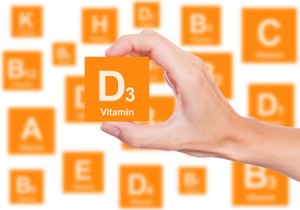Characteristics of Youth with Bipolar Spectrum Disorders

In a 2020 article in the Journal of Child and Adolescent Psychopharmacology, researcher Gonzalo Salazar de Pablo and colleagues described characteristics of youth with three different bipolar spectrum disorders: bipolar I disorder, bipolar disorder not otherwise specified (NOS) and mood disorder (MD) not otherwise specified. The participants were hospitalized adolescents aged 12–18 years, who were highly impaired with hallucinations, delusions, incoherence, or inability to function.
Mania (especially irritability) and depressive symptoms were common in all three groups.
Many of the youths had comorbid conditions. Approximately 40% of each diagnosis group had an anxiety disorder. Attention deficit hyperactivity disorder (ADHD) was seen in 29.2% of those with bipolar I disorder, 34.5% of those with bipolar NOS, and 43.5% of those with mood disorder NOS. Oppositional defiant disorder was seen in just over 20% of those with bipolar I or bipolar NOS, and just over 30% of those with mood disorder NOS. Substance use disorders were seen in 8.3% of those with bipolar I and about 21% of those with bipolar NOS or mood disorder NOS. Many of the participants had moderate to severe suicidality.
The median delay before the adolescents received treatment for their moderate to severe symptoms was 21 to 25 weeks. After discharge from the hospital, the adolescents with bipolar I, bipolar NOS, and mood disorder NOS were typically treated with atypical antipsychotics (79.2%, 62.1%, and 56.5%, respectively), mood stabilizers (66.7%, 31.0%, and 34.8%), and lithium (58.3%, 20.7%, 30.4%), with greater use of mood stabilizers and lithium than on admission and less use of antidepressants. Few children were on ADHD medications on admission, and even fewer (4-9%) on discharge.
The authors conclude: “Youth with BD-I, BD-NOS, and MD-NOS experience considerable symptomatology and are functionally impaired, with few differences observed in psychiatric comorbidity and clinical severity. Moreover, youth with BD-NOS and MD-NOS undergo a [long] period with subthreshold manic symptoms, enabling identification and, possibly, preventive intervention of those at risk for developing [bipolar disorder] or other affective episodes requiring hospitalization.”
Editor’s Note: These findings replicate many others in the field indicating that children with bipolar spectrum disorders, even those with symptoms short of a full-blown bipolar I diagnosis, are highly impaired with multiple comorbidities and high levels of suicidality and other dangerous symptoms. These patients deserve systematic pharmacological intervention based on an extensive clinical treatment literature.
The only thing the authors failed to address is that not only does no such clinical treatment literature exist, but there does not seem to be any recognition by the National Institute of Mental Health and other funding bodies that a series of treatment-oriented studies in children and adolescents is urgently needed.
The 2010 epidemiological studies of Kathleen Merikangas and colleagues indicate that 2.2% of adolescents have a bipolar spectrum diagnosis and that 80% of those young people are not in any kind of treatment. This is in part driven by a lack of consensus about appropriate treatment. The magnitude and seriousness of this illness creating lifelong problems, disability, cognitive impairment, and the loss of more than a decade of life expectancy is a public health catastrophe.
In the 1980s, AIDS protesters had to raise awareness, protest, and clamor for treatment studies in a highly confrontational manner before AIDS research was appropriate funded. Anthony Fauci, Director of the National Institute of Allergy and Infectious Disease since 1984, has said he was finally convinced that the AIDS protestors were correct, and he then joined forces with them to foster and accelerate treatment studies. The prognosis for AIDS changed from certain death in the 1980s to a manageable illness today.
We need leaders to demand attention to the lack of studies in bipolar disorder at a threshold that cannot be ignored by leaders of the NIMH. Patient advocacy groups must push the NIMH to fund treatment studies for bipolar disorder. It is clear that without some new form of pressure, the NIMH will fail in its stated mission to help make the lives of those with serious mental illness less grave. The current generation and many in the future generations of patients with bipolar disorder will otherwise face disaster.
Vitamin D3 Reduces Symptoms of Bipolar Spectrum Disorders
 Vitamin D3 tends to be low in children and adolescents with mania, but supplements may help. In a small open study published in the Journal of Child and Adolescent Psychopharmacology in 2015, Elif M. Sikoglu and colleagues administered 2000 IU of vitamin D3 per day to youth aged 6–17 for eight weeks. Sixteen of the participants had bipolar spectrum disorders (including subthreshold symptoms) and were exhibiting symptoms of mania. Nineteen participants were typically developing youth.
Vitamin D3 tends to be low in children and adolescents with mania, but supplements may help. In a small open study published in the Journal of Child and Adolescent Psychopharmacology in 2015, Elif M. Sikoglu and colleagues administered 2000 IU of vitamin D3 per day to youth aged 6–17 for eight weeks. Sixteen of the participants had bipolar spectrum disorders (including subthreshold symptoms) and were exhibiting symptoms of mania. Nineteen participants were typically developing youth.
At the beginning of the study, the youth with bipolar spectrum disorders had lower levels of the neurotransmitter GABA in the anterior cingulate cortex than did the typically developing youth. Following the eight weeks of vitamin D3 supplementation, mania and depression symptoms both decreased in the youth with bipolar spectrum disorders, and GABA in the anterior cingulate cortex increased in these participants.
Editor’s Note: GABA dysfunction has been implicated in the manic phase of bipolar disorder. While larger controlled studies of vitamin D supplementation are needed, given the high incidence of vitamin D deficiency in youth in the US, testing and treating these deficiencies is important, especially among kids with symptoms of bipolar illness.
Revisions of the DSM-V Related to Bipolar Disorder in Children
 The Pediatric Bipolar conference in March ended with a discussion led by Ellen Leibenluft and Danny Pine of the NIMH about possible changes in the diagnostic criteria for childhood onset bipolar disorder being considered for the fifth version of the Diagnostic and Statistical Manual of Mental Disorders (DSM-V), which will be finalized in the next few years. There has been an increase in the diagnosis of bipolar disorder in children in the past decade, and many have attributed this to over-diagnosis. Controversy about the precise symptoms and thresholds for diagnosis has been prominent in the literature and in the popular press.
The Pediatric Bipolar conference in March ended with a discussion led by Ellen Leibenluft and Danny Pine of the NIMH about possible changes in the diagnostic criteria for childhood onset bipolar disorder being considered for the fifth version of the Diagnostic and Statistical Manual of Mental Disorders (DSM-V), which will be finalized in the next few years. There has been an increase in the diagnosis of bipolar disorder in children in the past decade, and many have attributed this to over-diagnosis. Controversy about the precise symptoms and thresholds for diagnosis has been prominent in the literature and in the popular press.
The major change proposed was that the syndrome of severe mood dysregulation (SMD) described by Leibenluft et al. in 2003, may be called Temper Dysregulation Disorder (TDD), and would not be considered part of the bipolar spectrum. This is in part because SMD is not associated with an increased incidence of a positive family history of bipolar illness. Part of the motivation for separating TDD from bipolar illness is to cut down on what some consider the over-diagnosis of bipolar disorder in children.

